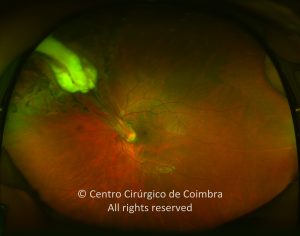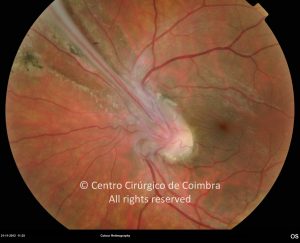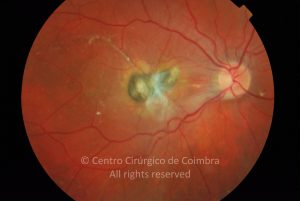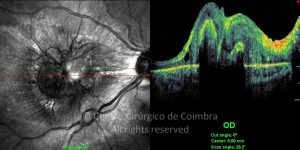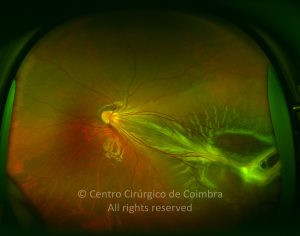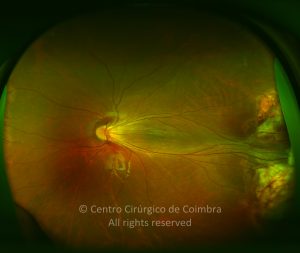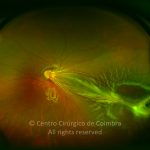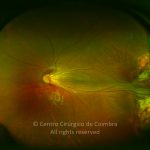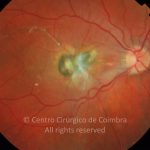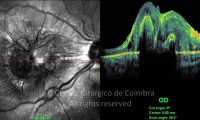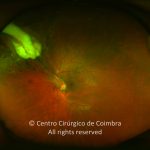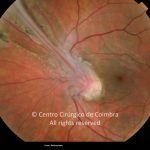Toxocariasis is an infectious parasitic disease caused by the larvae of the nematodes Toxocara canis and Toxocara cati which are intestinal worms of these hosts. Toxocariasis is a worldwide infection and humans are incidental hosts in which aberrant infection occurs because the parasites cannot completely mature.
The usual mode of infection is eating contaminated soil (geophagia, via hands) or uncooked food. Children who have close contact with dogs (puppies) are at great risk of infection. The disease is typically unilateral and most often seen in children, though many cases in adults have been reported.
Symptoms include decreased visual acuity, but the initial clinical manifestation may be strabismus or leukocoria.
There are three main forms of ocular toxocariasis:Peripheral granuloma; Posterior pole granuloma; Chronic endophthalmitis.
The granuloma is usually yellowish white, 1-2 disc diameter in size, where the larva is encysted. A common finding is a radial fold of the retina extending from the peripheral granuloma to the optic disc. Vitritis may be mild to severe and patients may present with hypopyon.
Complications include macular heterotopias, epiretinal membranes, tractional retinal detachment, ciliary body detachment with hypotony, cataract, secondary glaucoma and phthisis bulbi.
Differential Diagnosis:
Diseases with leukocoria:
- Retinoblastoma
- Coats Disease
- Retinopathy of prematurity
- Persistent hyperplastic primary vitreous
- Familial exudative vitreoretinopathy
- Toxoplasmosis
- Pars planitis
- Endogenous endophthalmitis





